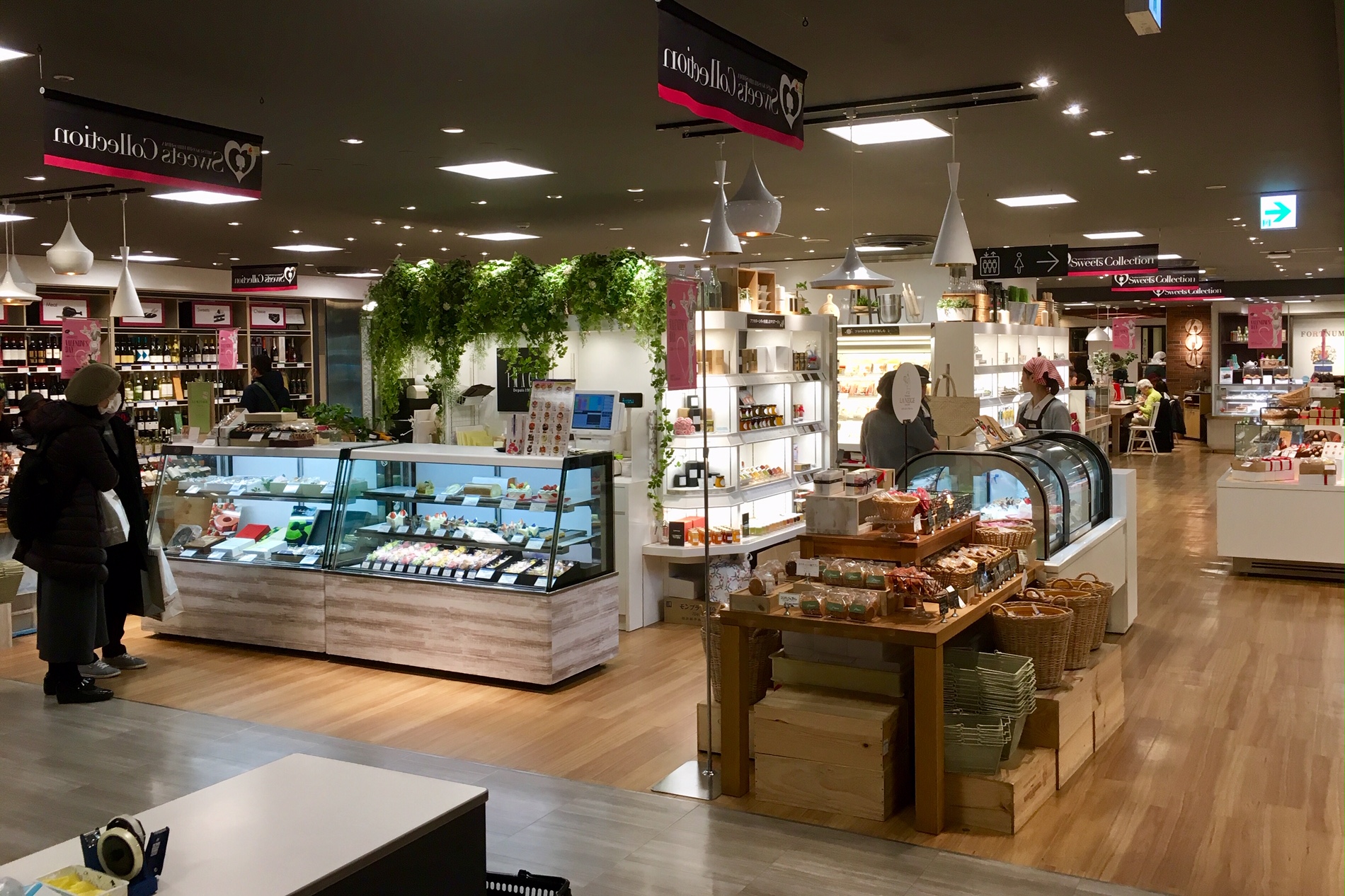Jan 28, 2019
The Shopping Underground: Depachika in Hiroshima

One of the best reasons to visit a department store here is to ride the elevator down to the basement, where a food lover’s wonderland lies waiting. ‘Depachika’ combines the first two syllables of “department store” with the Japanese word for “basement.” Though they’ve evolved over the decades, depachika have been luring shoppers underground since the 1930s to browse gourmet goods, locate hard-to-find ingredients, or come away with the perfect gift.
Often connected to train stations, most of Hiroshima’s depachika are downtown. Like depachika elsewhere, though, they’re broadly organized into three sections, a deli, gift section, and market. In the deli, you’ll find salads, cold cuts and beautiful take-away bento boxes along with other offerings, all ready to eat. The gift section is a gallery of traditional Japanese teas, crackers, and sweets, arrayed alongside Western chocolates and pastries and row upon row of wine and sake bottles. The markets, meanwhile, may look at first glance like a standard small supermarket, but a closer look reveals a line of merchandise that you’re unlikely to come across at your local Fresta. Combining practicality and luxury, many visitors come more to browse than to shop, nibbling at samples as they wind their way between the glass display cases.
Fukuya
Fukuya is located between the other two department stores mentioned here, at the intersection of Aoi-dori and Chuo-dori right in the heart of downtown Hiroshima. Because it anchors the Hondori shopping arcade, Fukuya is often busy, and its depachika is a fairly lively place. Striking a balance between the gleeful sprawl of Sogo’s basement and the more curated elegance of Mitsukoshi, Fukuya’s depachika has a relaxed atmosphere, with a large proportion of elderly customers who look as if they’ve been shopping here for decades. The space occupies a large, L-shaped footprint, though as is often the case with depachikas you can quickly lose your way on a first visit. There are spots to sit with a cup of tea, and even a small branch of the local Michan okonomiyaki restaurant at one end. In between, you’ll find everything from Japanese sweets and tea to jewel-box arrangements of sushi, French fruit preserves and glass cases of pickled vegetables. The wine and spirits section is modest but has a whimsical selection of Hiroshima Carp-themed bottles, a perfect souvenir of Hiroshima.
Sogo
This is actually a double depachika, with two levels, so after you’ve browsed the stunning variety of sweets and teas available on the B1 level, perhaps pausing for a coffee or picking up something to bring home, be sure to check out the supermarket and fish counters at the north end. Then head down to B2, where the delicatessen section’s vendors offer yakitori, fresh dumplings, salads, fried pork cutlets, and croquettes and a hundred other things.
The first level opens directly onto Hiroshima’s Shareo underground shopping center, which is worth a stroll. The sweets section is often crowded even in the middle of a weekday, which can make it feel like a year-round food festival. They are, though, gradually trying to raise the image of the place. My eight-year-old’s heart was broken a year ago when we found that an old candy shop, with a rotating display of delights at child’s eye-level, had been replaced by something slightly more elegant but instantly forgettable. Still, this is the place to go if you want to load up on provisions for a day at the beach or the stadium or buy the perfect gift for a friend with a sweet tooth.
Mitsukoshi
This is the fur-draped old queen of Hiroshima’s depachika. Not as large as the two mentioned above, it makes up for volume with its endlessly fascinating selection. The supermarket section, in particular, is a wonderful place to browse if you love food. The fish in the seafood case look thrilled to be here, gleaming and glossy-eyed, while the abalone writhes fetchingly in its shell, unaware of the horrors in store. I knew a bodybuilder who for a year ate chicken breasts from the meat department three times a day because they were the best to be had. The fruit looks more engineered than grown, each piece huge and utterly flawless (with prices to match). Need more than one brand of Sacha inchi oil to choose from, or for your black cumin seed oil to be certified organic? You’re covered. Unhappy with a selection of butter that represents fewer than a dozen creameries, foreign and domestic? Have no fear. Unsure whether your freeze-dried currants should be whole, flaked or powdered? Get all three! The shochu and sake cases here are fantastic. Just running a finger along the labels is a luxury. Nearby are displays of old-school Japanese sweets, glistening bars of colorful jelly that friends and family back home won’t know whether to eat or wash with. And an octogenarian gentleman advising at the tea counter draws on a body of knowledge that should qualify him as a National Treasure. A great place, and well worth a stop, even if you have no intention of actually buying anything.
Fukuya
Address: 6-2-6 Ebisucho, Naka-ku, Hiroshima-shi 730-0021
Access: Corner of Aoi-Dori and Chuo-Dori, north from Parco in the Hondori shopping arcade.
Hours: Monday to Thursday, 10:00-19:30. Friday and Saturday, 10:00-20:00.
Telephone: 082-246-6111
Website: http://www.fukuya-dept.co.jp/honten/
Sogo
Address: 6-27 Motomachi, Naka-ku, Hiroshima 730-8501
Access: Downtown, two blocks north from where the streetcar line bisects Hondori.
Hours: 10:00-20:00 daily.
Telephone: 082-225-2111
Website: https://www.sogo-seibu.jp/hiroshima/
Mitsukoshi
Address: 5-1 Ebisucho, Nakaku, Hiroshima 730-8545
Access: One block east of Fukuya along Aoi-Dori.
Hours: 10:30-19:30 daily.
Telephone: 082-242-3111
Website: https://mitsukoshi.mistore.jp/store/hiroshima/index.html
Photo by author


About the author